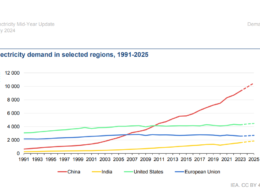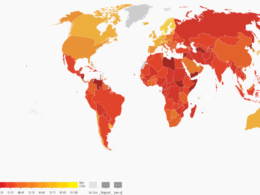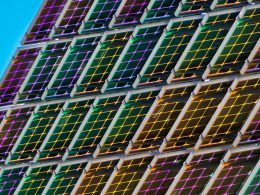Global investment in clean energy is on track to reach an unprecedented $2 trillion in 2024, nearly doubling the amount allocated to fossil fuels, according to the International Energy Agency’s (IEA) latest report. This surge in investment comes despite higher financing costs that are slowing new projects, especially in emerging and developing economies.
For the first time, total global energy investment is expected to exceed $3 trillion in 2024. Of this, around two-thirds will be funneled into clean technologies, including renewables, electric vehicles, nuclear power, grids, storage, low-emission fuels, efficiency improvements, and heat pumps. The remaining $1 trillion-plus will go towards coal, gas, and oil. This marks a significant shift from 2023, when investment in renewable power and grids first overtook fossil fuel spending.
However, the report highlights significant disparities in how energy investment is distributed globally. Clean energy spending in emerging and developing economies, excluding China, is poised to surpass $300 billion for the first time in 2024, led by India and Brazil. Despite this milestone, this figure represents only about 15% of global clean energy investment—a fraction of what’s needed to meet the rising energy demands in these regions, where high capital costs are a major barrier to project development.
IEA Executive Director Fatih Birol says that clean energy investment is setting new records even in challenging economic conditions, reflecting the strong momentum behind the global energy transition. Yet, more must be done to direct investment to where it’s most needed, particularly in developing economies where access to affordable, sustainable, and secure energy remains severely lacking.
The report underscores the dramatic transformation in energy investment since the Paris Agreement in 2015. Back then, investment in renewables and nuclear energy was double that of fossil fuel power. By 2024, this ratio is projected to soar to ten times, driven primarily by the rapid expansion of solar photovoltaic (PV) technology. Investment in solar PV alone is expected to reach $500 billion in 2024, spurred by declining module prices.
China is expected to dominate global clean energy investment, with spending projected to hit $675 billion in 2024. This is largely due to strong domestic demand in solar, lithium batteries, and electric vehicles. Following China are Europe and the United States, with expected investments of $370 billion and $315 billion, respectively. These three regions together will account for more than two-thirds of global clean energy investment, highlighting significant disparities in global energy capital flows.
Meanwhile, global upstream oil and gas investment is forecast to rise by 7% in 2024, reaching $570 billion. This increase is driven mainly by national oil companies in the Middle East and Asia. The IEA report notes that while this level of investment aligns with current policy-driven demand projections for 2030, it far exceeds the levels required under scenarios that meet national or global climate targets. Notably, clean energy investment by oil and gas companies remains minimal, accounting for just $30 billion, or 4% of their total capital spending in 2023.
Coal investment is also on the rise, with over 50 gigawatts of unabated coal-fired power capacity approved in 2023—the highest since 2015. The report points to grids and electricity storage as significant challenges to clean energy transitions. However, grid spending is expected to rise to $400 billion in 2024, up from a stagnation of $300 billion annually between 2015 and 2021. This increase is driven by new policy initiatives and funding in key markets such as Europe, the United States, China, and parts of Latin America. Investments in battery storage are also gaining momentum, expected to reach $54 billion in 2024 as costs continue to decline. Yet, similar to other clean energy investments, the bulk of this spending is concentrated in advanced economies and China, with only a tiny fraction reaching other emerging and developing economies.
The IEA report underscores the urgent need to address these imbalances to ensure that the benefits of the global energy transition are more evenly distributed, particularly to regions that are currently being left behind.
For investors, the $2 trillion surge in clean energy spending in 2024 presents a compelling opportunity to align financial goals with sustainability. By backing innovative clean technologies, investors can not only drive the energy transition but also secure strong returns. As global demand for sustainable solutions grows, companies at the forefront of clean energy are positioned for significant financial gains. Also, investing in clean energy helps mitigate risks associated with the decline of fossil fuels, regulatory shifts, and the increasing focus on climate resilience.




















